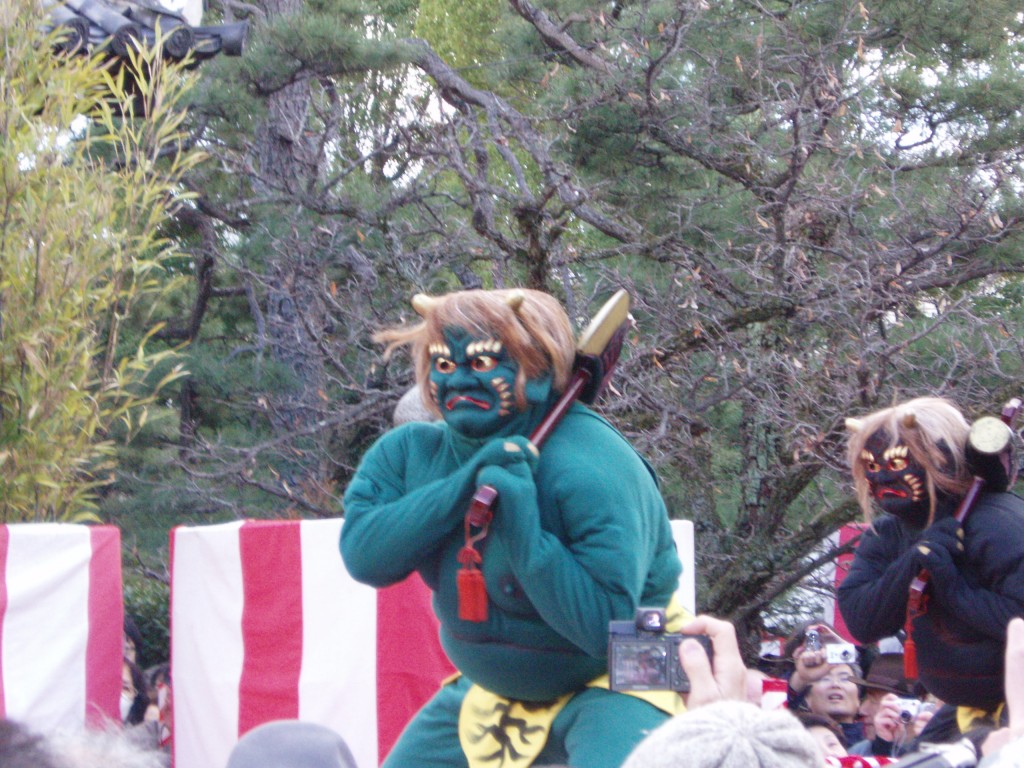
Demon at Kyoto's Rozanji temple
Feb 3 is Setsubun and a time for throwing beans at demons… It takes place at shrines, temples and people’s homes.
Here’s Wikipedia’s succinct overview of the custom and its origins:
Setsubun is the day before the beginning of Spring in Japan. The name literally means “seasonal division”, but usually the term refers to the Spring Setsubun celebrated yearly on February 3 as part of the Spring Festival. In its association with the Lunar New Year, Spring Setsubun can be and was previously thought of as a sort of New Year’s Eve, and so was accompanied by a special ritual to cleanse away all the evil of the former year and drive away disease-bringing evil spirits for the year to come. This special ritual is called mamemaki (literally “bean scattering”). Setsubun has its origins in tsuina, a Chinese custom introduced to Japan in the eighth century.
For an explanation of the beans, click here.
For some interesting facts about the festival, see here.
For a description of the festival at Kyoto’s Yasaka Jinja, see here.
For a photo story of Setsubun at Shimogamo Jinja, see here.
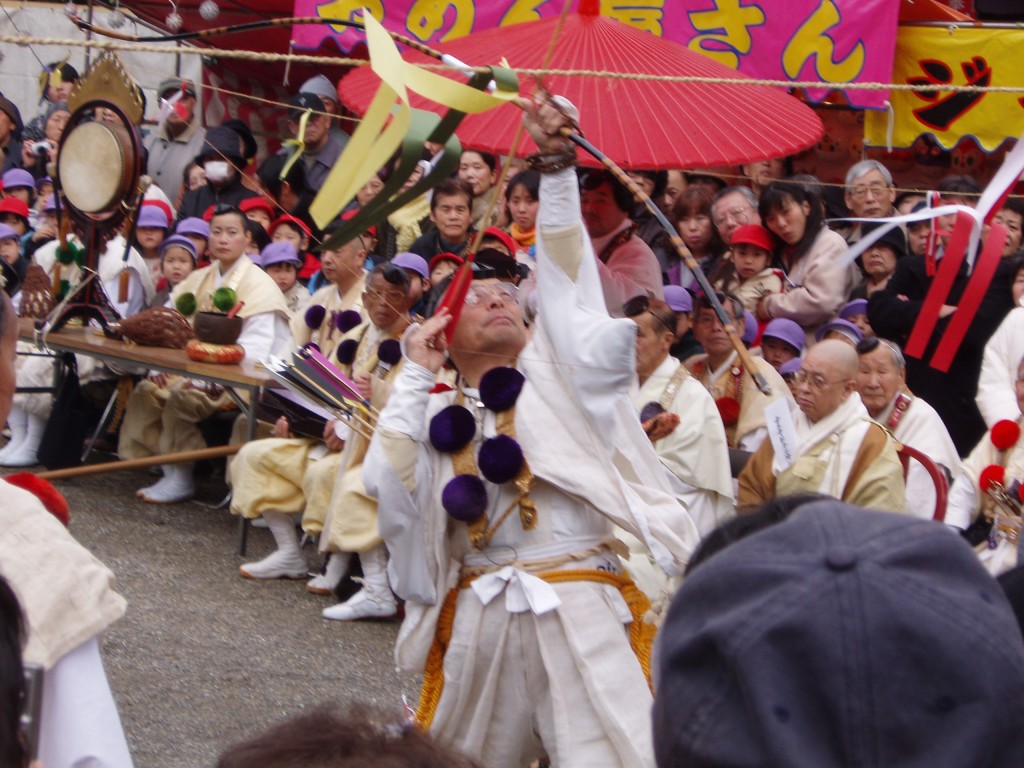
Purification of place prior to a Shugendo Setsubun ceremony
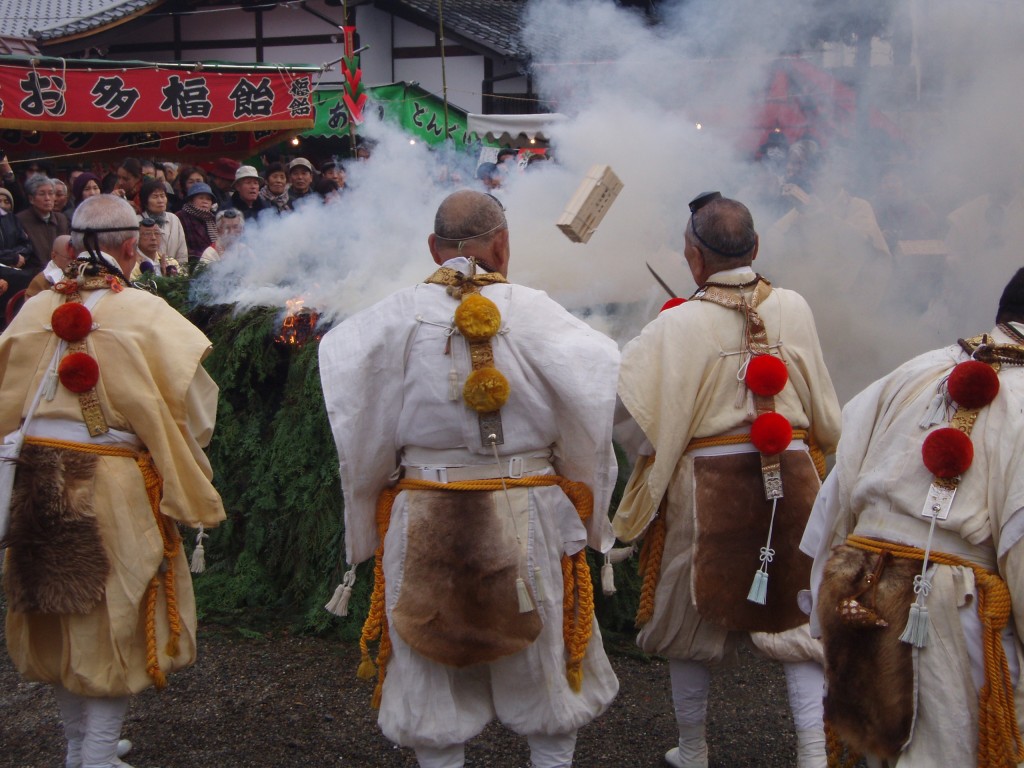
The Shugendo rite involves a lot of smoke as wooden prayer tablets are ritually burnt
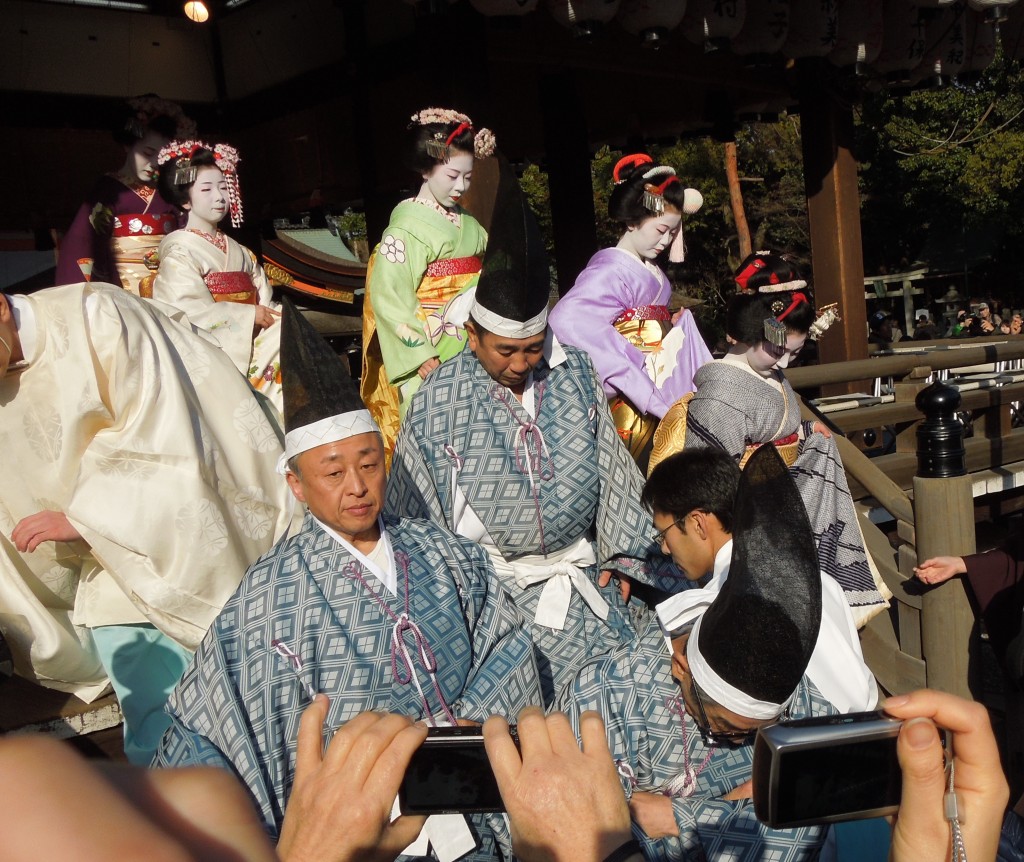
Priests and maiko descend from the stage after distributing lucky beans at Yasaka Jinja in Kyoto
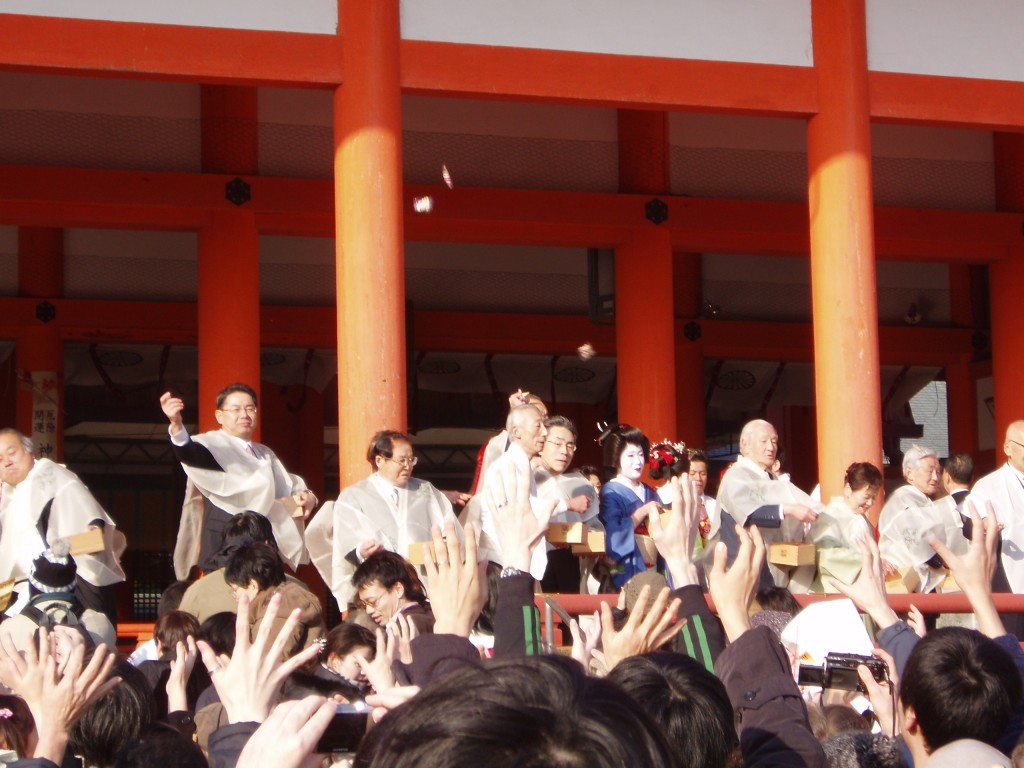
A geisha joins senior parishioners to distribute lucky beans at Heian Jingu in Kyoto

Demons personifiying evil and spiritual pollution appear at some festivals
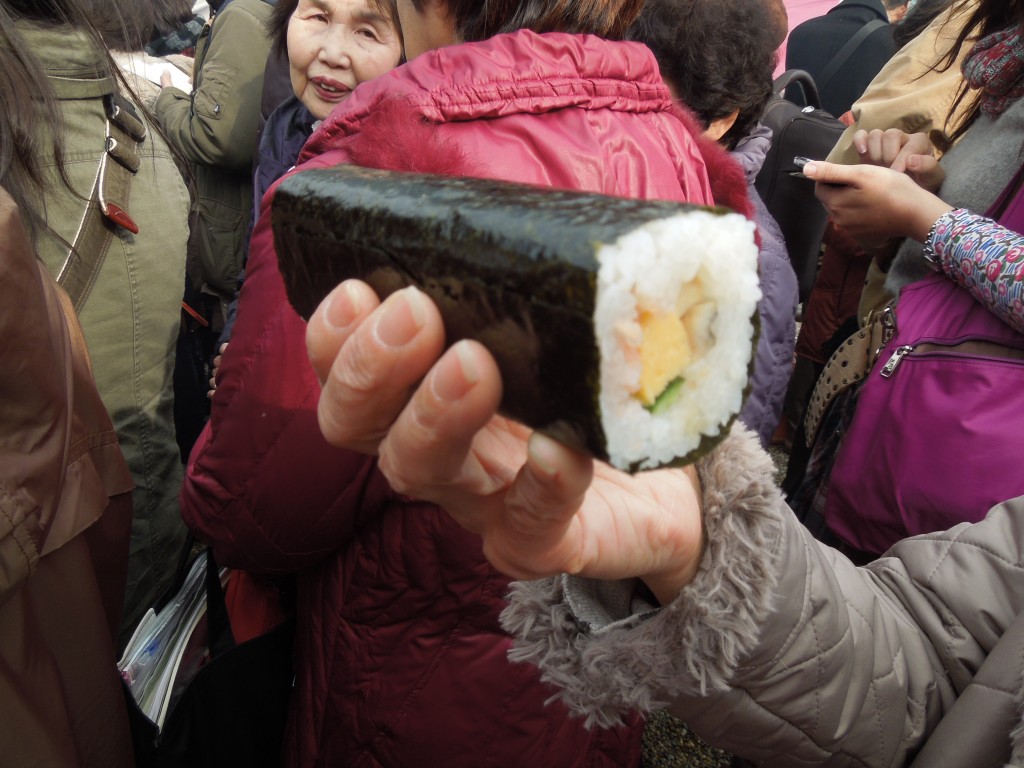
Eating a special kind of sushi roll (ehomaki) in the year's lucky direction is one of the Setsubun customs
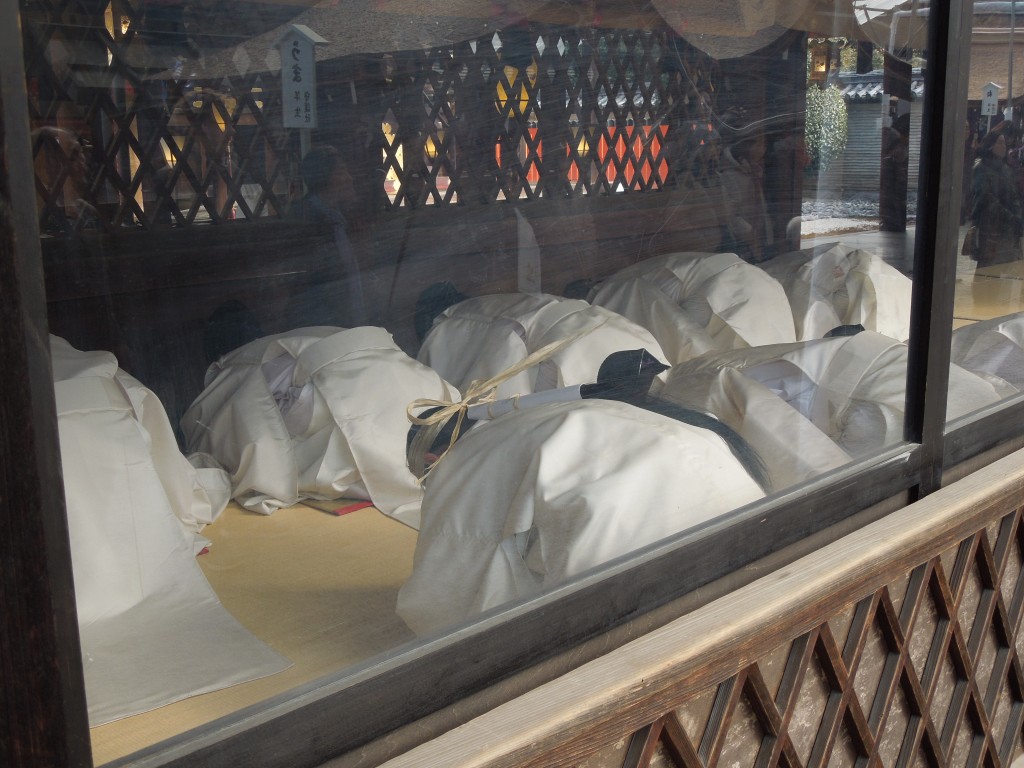
Priests at Shimogamo Jinja show the religious aspect behind all the jollity

Very interesting blog John. I bumped into it due to two reasons: (1) I was looking to see if Alan Watts (whom I’ve read and, these days, listen to on youtube–as you do…) had anything to say about kami and (2) because I’m planning a trip to Japan at the end of May with a friend. Specifically, I want to go to, among other places, Takayama (I was there in the 90s and loved it). Have you written anything about Takayama? (I see you have something about Gokayama in your book, which looks interesting, I must get a copy!)
I don’t know much about Shinto, but what I find interesting is that (like other Asian “religions”, or more so than them) it is not what a Westerner would understand by the term “religion”. This article starts as follows:
It is a much more healthy attitude, one that would not, for instance, lead to extremism.
Thanks Takis for your interest. As regards Takayama, I’m afraid I haven’t written anything about it specifically, though as you note I’ve covered the nearby Go-Shirakawa area in my World Heritage book. As for the Japanese attitude to religion, it’s a very complicated subject! I don’t think one could do justice to it in a few words, but basically it’s more a matter of custom and tradition than it is of belief. Virtually all Japanese I know of pay respects when visiting a shrine. They may even buy a fortune slip or a lucky charm. They may well take part in a festival during the year. All of that by no means implies however they believe in some supernatural being called a kami. So we can conclude from this that religion in Japan is built into daily life and is not a matter of belief, as Westerners tend to see religion. Perhaps the easiest analogy is the celebration of Christmas in the West. Virtually everyone in Britain holds some kind of celebration, but the percentage who actually believe it is special because of the birth of Jesus is very small.
As for your final point about Shinto attitudes not leading to extremism, I’m afraid that is far from the case and there are those in the present government who would like to reintroduce the trappings of prewar State Shinto when extremism was all too evident.
Re: sakaki post
My one moment of satori started when a leaf from a sakaki landed in my eye!
I stopped at the spot and turned around to take in such a moment and wham.
Also I suggest looking gazing into a sakaki tree. The small gaps between the dense leaves lets bits of light to come through and have given me two visions. I didn’t know at the time what the tree was or anything of its sacred use. Needless to say, I’m a believer.
Nice blog
Thank you for the input, Peter. I’ll be looking at sakaki trees in a different light in future…